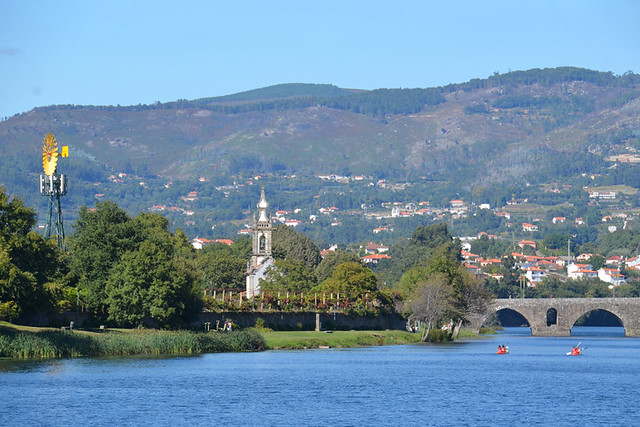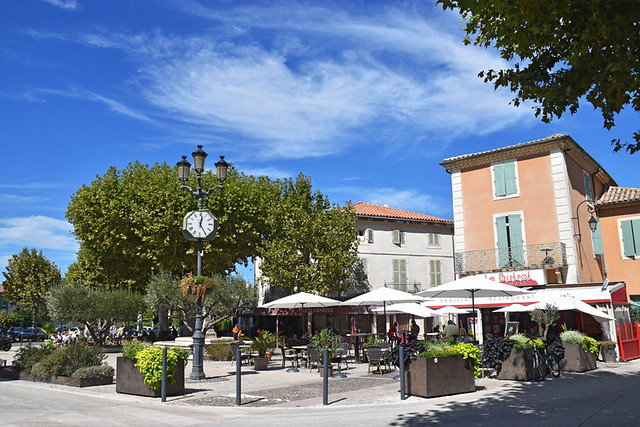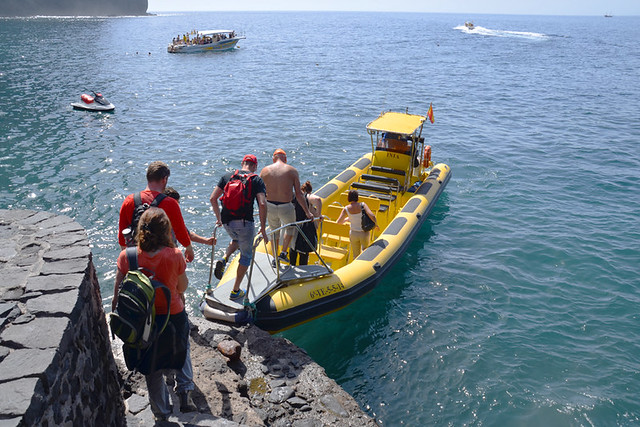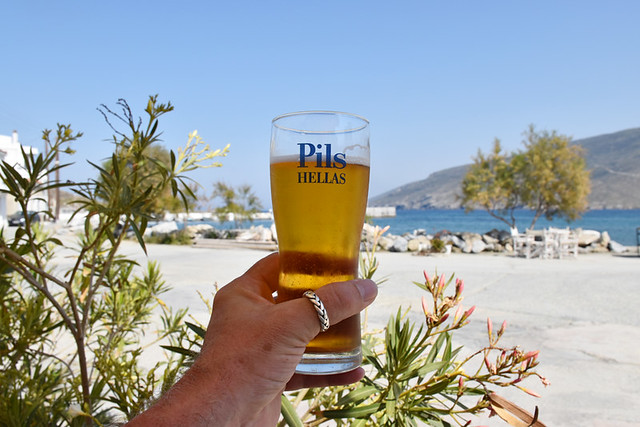Some years ago whilst on a hugely enjoyable travel blog/press trip I had a road to Damascus moment. We were being ferried about on a coach which transported us effortlessly from our accommodation to the most wonderful locations where we enjoyed unforgettable experiences.
At one point it occurred to me that this form of travel wasn’t a million miles away from the average package holiday coach excursion. Being ferried to experiences hand-picked by someone else wasn’t really the way I wanted to travel. I’m indebted to that trip and wouldn’t have missed it for the world; however, it was a catalyst for change in many differing ways. We both went on a couple of other press/blog trips after that but, on the whole, phased them out of our travel plans.

Six years later, stinking of vinho verde (courtesy of a bottle which broke when our rucksack fell off a bench) and sitting on the banks of the River Lima wondering whether a taxi I’d tried to arrange using bad Portuguese was going to turn up and save the day, I pondered the wisdom of swapping travel where someone else makes most of the arrangements for travel which was more seat of the pants stuff.
Travelling around cities and big towns is easy, relatively speaking. Where there are many commuters, there’s generally good public transport links. Getting from A to B isn’t a problem once you tune in to how things work in any specific location.

As experienced walkers know, it’s not the same in rural locations where low levels of population mean limited transport links. We regularly find ourselves in areas where figuring out how we’re going to travel to, or return from, a linear walking route using whatever local transport is available can prove somewhat of a ‘suck it and see’ exercise.

Stumped in Germany
Germany is an outstanding joy when it comes to public transport links. A gästekarte in some rural areas allows visitors free (you pay a nominal tax at your rural hotel and in return receive a ‘guest card’) use of buses and trains, of which there is a good network. In the Black Forest we never had to task the grey cells too much to figure out public transport connections. We’d simply hop on and off trains and buses which took us to and from start and end points of walking routes. Only on one occasion, in Kaiserlautern, we nearly came unstuck when a timetable didn’t match reality and we found ourselves sitting at an empty bus station in a place we didn’t want to be on a sleepy Sunday morning. With an hour to wait before the train which would return us to our starting point we had plenty of time to pour over our map, improvise and come up with a great little route which didn’t involve having to use any transport at all. So it all worked out well in the end.

Lost in translation in France
In many locations there are not always convenient railway stations at hand nor bus routes which run on a regular enough basis to make them viable. At these times taxis are lifesavers. In Drôme Provençale, one route took us to Saint-Paul-Trois-Châteaux. At this point Inntravel customers on the holiday we were helping design will be able to check into their new hotel and relax. However, we had to get back to accommodation at our starting point. As we were in a decent-sized town we figured there’d be no problem picking up a taxi. Wrong. There were none to be seen. Using Google advice we headed to the nearby location of one firm to find it no longer existed. We plonked ourselves down on the kerb in the car park of an adjacent supermarket and called the contact taxi. The regular driver and his English speaking girlfriend had taken the weekend off (the reason why we didn’t call them first) and the back up driver didn’t speak any English. Giving directions in a language you’re not totally comfortable in is a risky business. But Andy did a sterling job and, after one lost in translation mix up, the taxi driver rolled into the supermarket car park.
Having a local taxi firm number to hand is a sensible plan whatever your walking circumstances are.

Part of the experience on Tenerife
When is the end of a walking route not an end but a continuation of the experience? When the route involves descending the Masca Barranco on Tenerife. For years we left our car above Masca hamlet, and walked the barranco (gorge) both ways. It’s not a long route, but it is a challenging one. The last two times we took the easy option – we descended the ravine and jumped onto a water taxi (pre-booked) when we arrived at the coast. It’s an exhilarating way to end a walk; the sun warming, the sea spray refreshing on your face. Plus there’s the chance of some dolphin-spotting on the short voyage back to the resort of Los Gigantes where a queue of taxis wait to transport folk back to their cars in Masca (around €25). It’s a far more enjoyable way of experiencing the Masca Barranco than having to trudge all the way back up it again.
(Note: the Masca Barranco is currently closed to the public and is expected to open again in March 2019.)

Laid on a plate on Andros, Greece
Sometimes when someone else arranges the transport it can still feel like it’s part of a uniquely local experience. Fourteen kilometres of climbing in an out of valleys led us from Andros town to Ormos Korthiou, a coastal town so sleepy a swan was able to take a long dust bath in the centre of the main road without fear of being flattened. It was also a place where it was instantly evident there wasn’t going to be a bus or taxi to take us home. As always, we had a back-up number to call. But there was no need. In Allegria, one of the only tascas open, the owner greeted us with a “you need taxi? I phone taxi… but plenty of time for a beer first.” It turned out there was time for two beers, and also for the owner to have a nap on one of his tables before our taxi driver turned up in a sleek Mercedes where the meter was part of the rear-view mirror (first time I’d ever seen that). She gave us a present of scented wild lavender in a muslin bag and kept us entertained with tales of island life on the 40 min journey back to our hotel.
Thirty tears ago I would have fretted about having localised travel arrangements nailed down in advance. The older I get, the far more chilled I am about this sort of thing. If we have to wait for an hour in a small bar somewhere, no problem. In fact, all the better.
It’s all part of building up experiences of the reality of a local way of life across a wide variety of destinations.




Be the first to comment